Mark Caney's Blog, page 37
March 29, 2013
Dolphin mother still carrying dead calf
Participants on a “Captain Dave’s Dolphin and Whale Watching Safari” off the coast at Dana Point, CA, USA witnessed an emotionally moving form of bottlenose dolphin behavior this week: a deceased dolphin calf was being carried around on the back of an adult bottlenose dolphin. To onlookers, it felt like a kind of funeral procession, in the sea.
“I believe this calf has been dead for many days, possibly weeks,” said Captain Dave. “You can see the flesh is decaying. In my nearly twenty years on the water whale watching I have never seen this behavior. Nor have I ever seen anything quite as moving as this mother who refuses to let go of her poor calf.”

March 23, 2013
Slow death shadows popular Australian dolphin
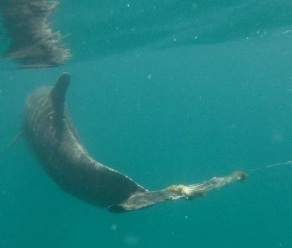 Researchers fear a well-known Swan River dolphin will die after fishing line became wrapped around its tail. “Fingers” was found late last month trailing the line and Murdoch University dolphin expert Hugh Finn said it would continue to cut into his fluke, possibly severing the fin. Algae could build up on the line and cause drag until Fingers could not catch fish or avoid sharks. He could also die from a chronic infection. “The line doesn’t break down, it just creates heaps of scar tissue and keeps cutting into the tissue until it gets down to bone,” Dr Finn said.
Researchers fear a well-known Swan River dolphin will die after fishing line became wrapped around its tail. “Fingers” was found late last month trailing the line and Murdoch University dolphin expert Hugh Finn said it would continue to cut into his fluke, possibly severing the fin. Algae could build up on the line and cause drag until Fingers could not catch fish or avoid sharks. He could also die from a chronic infection. “The line doesn’t break down, it just creates heaps of scar tissue and keeps cutting into the tissue until it gets down to bone,” Dr Finn said.
Researchers have followed Fingers since 1993, when he was in his late teens or early 20s, and believe he was born in Cockburn Sound. Male dolphins form strong bonds and Fingers and friend Backpack are almost inseparable after 20 years. Both were recently spotted begging for fish from boats after people had been illegally feeding dolphins in Cockburn Sound. “Fingers probably has this entanglement because he’s been hanging around boats,” he said. Dr Finn called for biodegradable line to reduce “death traps” for marine life.
A Murdoch University report in January said the Swan River’s dolphins were vulnerable, with only four adult females left after three died in a spate of deaths in 2009.
Source: The West.com.au

March 15, 2013
Bottlenose Dolphin Leaders More Likely to Lead Relatives
Traveling into uncharted territory in search of food can be a dangerous undertaking, but some bottlenose dolphins may benefit by moving through their habitat with relatives who may be more experienced or knowledgeable. It turns out that leaders in bottlenose dolphin groups in the Florida Keys are more likely to be related to the dolphins that follow them, according to research published March 13 by Jennifer Lewis and colleagues from Florida International University.
In complex habitats like the shallow waters of the Florida Keys, individuals who follow may benefit from the experience of those that lead them, but the advantages to leaders are less obvious, as they must share food resources encountered with the group. In this study, the authors assessed indirect benefits to leaders in bottlenose dolphin groups, by measuring the chances of a leader being related to their followers. They found that when two dolphins shared a leader-follower relationship, their chances of being related were much higher than seen in dolphin pairs that associated in other ways.
Full story: Science Daily

March 12, 2013
Ukrainian ‘Killer Dolphins’ May Have Escaped to Seek Mates
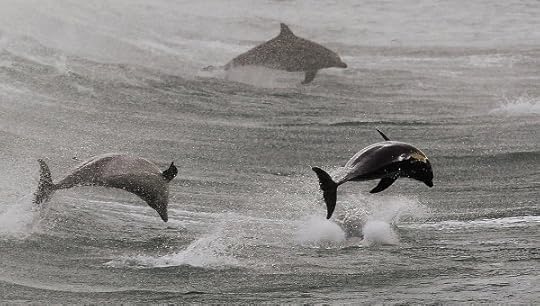 Three of the Ukrainian navy’s “killer” dolphins that swam away from their handlers during training exercises probably left to look for mates, an expert said on Tuesday.
Three of the Ukrainian navy’s “killer” dolphins that swam away from their handlers during training exercises probably left to look for mates, an expert said on Tuesday.
Ukrainian media reported earlier this month that only two of five military-trained dolphins returned to their base in the Crimean port of Sevastopol after a recent exercise.
Ukraine’s Defense Ministry denied the reports, while refusing to confirm the navy makes use of dolphins, despite the frequent appearance in Ukrainian media of photographs of dolphins with military equipment strapped to them.
“Control over dolphins was quite common in the 1980′s,” said Yury Plyachenko, a former Soviet naval anti-sabotage officer. “If a male dolphin saw a female dolphin during the mating season, then he would immediately set off after her. But they came back in a week or so.”
Dolphins were trained at Sevastopol for the Soviet Navy as far back as 1973. They were trained to find military equipment such as mines on the seabed, as well as attacking divers and even carrying explosives on their heads to plant on enemy ships.
After the breakup of the USSR and the division of the Black Sea Fleet into Ukrainian and Russian fleets, the dolphin training section and its specialists were handed over to the Ukrainian navy. They were then used for civilian tasks such as working with disabled children, in order to keep the unit intact.
A military source in Sevastopol told RIA Novosti last year that the Ukrainian navy had restarted training dolphins to attack enemy combat swimmers and detect mines. The killer-dolphins would be trained to attack enemy combat swimmers using special knives or pistols fixed to their heads, the source said.
Source: Ria Novosti

California Commission Rejects Navy Sonar Project That Threatened Marine Mammals
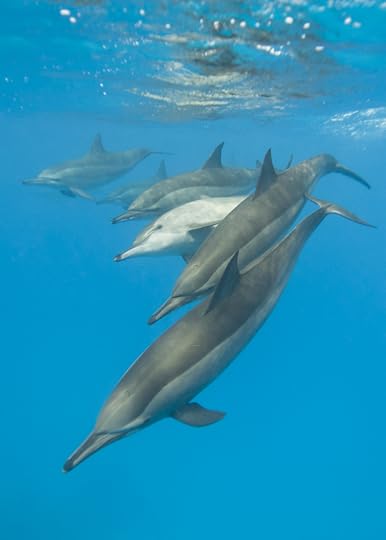 The California Coastal Commission today rejected a dangerous plan by the U.S. Navy for sonar and explosives training that threatened marine animals in Southern California, including endangered blue whales. The war training exercises would have killed 130 marine mammals and caused hearing loss in about 1,600 animals, according to Navy estimates.
The California Coastal Commission today rejected a dangerous plan by the U.S. Navy for sonar and explosives training that threatened marine animals in Southern California, including endangered blue whales. The war training exercises would have killed 130 marine mammals and caused hearing loss in about 1,600 animals, according to Navy estimates.
“These war games have real and deadly effects on California’s wildlife, including some already trying to fight off extinction,” said Emily Jeffers with the Center for Biological Diversity, which opposed the Navy’s plan. “We’re happy the commission saw this dangerous proposal for what it is and is taking the right steps to protect our state’s wildlife.”
Elsewhere, the Navy’s mid-frequency sonar has been implicated in mass strandings of marine mammals. In 2000, 14 beaked whales and several other marine mammals stranded themselves in the Bahamas in response to U.S. Navy vessels operating offshore mid-frequency sonar. Necropsies revealed bleeding around the animals’ ears and brains. The entire Cuvier’s beaked whale population disappeared from the area after the incident. In 2003, 14 harbor porpoises were stranded during Navy sonar training in Puget Sound. In 2004, hundreds of melon-headed whales were driven into Hanalei Bay, Hawaii by Navy exercises.
“America’s sea life has already paid too steep a price for these military exercises. Some are killed by explosives, others lose their hearing and die after the fact,” Jeffers said. “Places where whales and other endangered species are congregating should be off-limits to these kinds of deadly actions.”
Earlier this year, the National Marine Fisheries Service proposed to allow the Navy to harm marine mammals up to 9.5 million times in the Hawaii and Southern California Training Ranges and 21.8 million times in the Atlantic Training Range over a period of five years. This will surely result in thousands of cases of permanent hearing loss, lung injuries and death. Ocean noise is also known to harm fish; there have been reports of reduced abundance in areas with noise disturbance. The Fisheries Service is accepting comments on that proposal until March 11.
Source: Center for Biological Diversity

March 6, 2013
Dolphins saved my life says woman
A woman says she owes her life to a pod of dolphins after slipping off a cliff and into the sea while trying to rescue her dog.
She says she thought she was going to die before the dolphins nudged her and her dog to safety.
Karyn Gitsham walks her dogs Buddy and Ramsay along the beach at Carrickalinga, on South Australia’s Fleurieu Peninsula, every morning.
Four-year-old Cocker Spaniel Ramsay often runs into the water chasing seagulls, but this morning he got into trouble when he couldn’t swim back.
Ms Gitsham says she climbed up the cliff face to follow the distressed pooch from the shore when the unthinkable happened.
“I just remember falling and I’m in the water and the waves were just pounding me up against the rocks and I could see him out there trying to get back in,” Ms Gitsham told 7News.
It was then that her unlikely saviours came to the rescue.
“I remember going under and coming back up I saw a fin, and I saw him, and thought ‘oh great, it’s a shark’,” she said.
“And then I saw another fin then I realised they were dolphins.
“These dolphins just formed this horseshoe and were guiding him in, pushing him in.”
Letting go to grab Ramsay, Ms Gitsham says the dolphins nudged the pair to safety.
“The dolphins came around me and pushed me into a massive, big boulder,” she said.
The retired police officer says her rescue is nothing short of a miracle.
But she won’t be tempting fate again, and will be keeping Buddy and Ramsey on the leash when they go on their morning strolls from now on.
Source: Yahoo7 News

March 2, 2013
A massive pod of dolphins in Wellington Harbour, NZ
February 26, 2013
Author of Dolphin Way featured
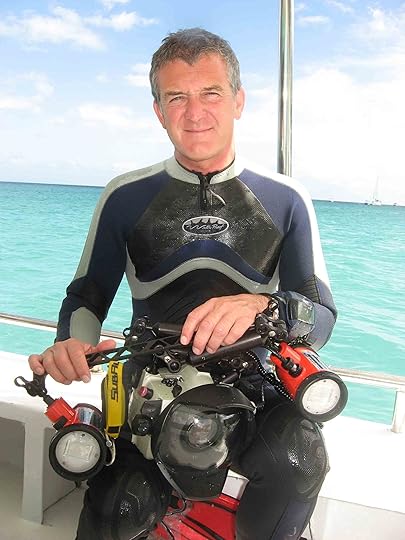 Mark Caney, author of Dolphin Way, has been featured in Avi Bernstein’s “Series of Underwater Photographers“.
Mark Caney, author of Dolphin Way, has been featured in Avi Bernstein’s “Series of Underwater Photographers“.
This biographic detail accompanied the image:
A diver since 1976, Mark Caney began diving in the UK. By the time he had made his first ten dives he was taking a camera underwater and underwater photography has been a passion ever since.
He ran a dive centre in Cyprus from 1980 to 1990 after leaving the British military and there had a chance to refine his technique as he was spending so much time underwater.
From Cyprus he traveled extensively, conducting PADI instructor level and technical diving programs internationally; he also led an award winning expedition lasting four months to explore previously undived parts of the African coast. Whenever there was a chance, he would be carrying his housed Nikon system.
As well as being widely published as an underwater photographer, Mark is a writer, and his work has featured extensively in magazines and other media. He has also contributed to many of the publications produced by PADI since he began working in his present position of Vice President, Training and Customer Services at PADI Europe, Middle East and Africa. In 2011 he had his first novel published, Dolphin Way: Rise of the Guardians, a unique book in that it is set entirely in the world of the dolphins.
His strong technical diving background led him to be deeply involved in development of all of the PADI technical diving courses from EANx through to CCR and he is a member of the PADI TecRec test dive team. He continues to play a key role in shaping the direction of technical diver training, calling on his wealth of experience of international practices and expedition diving to ensure TecRec courses match the needs of technical divers whether they are diving in the tropics or above the Arctic Circle. He is Vice President of PADI’s Technical Diving Division.
Mark has twice been the President of the European Underwater Federation (EUF), for a total of five years. He has been heavily involved in the establishment of European and ISO standards for diving and he continues to represent the UK as one of its two Designated Experts for international standards negotiation and design. In addition to diving and photography, Mark is a keen sailor and a sailing instructor and has often managed to combine the three activities.

February 23, 2013
Dolphins and many other dead animals washed ashore in Peru
Experts are trying to work out why nearly 100 dead animals and birds have washed up on a Peruvian coastline.
The bodies of 18 sea turtles, 22 sea lions, eight dolphins, 16 angular roughsharks and 22 marine birds were found during an inspection by government officials.
Some of the creatures were sprayed with a special paint as part of an investigation into the grim discovery along 77 miles of the Lambayeque coastline.
The carcasses, were in various states of decomposition, were measured, placed in bags and then taken away for analysis.
Jaime De La Cruz, an engineer with Peru’s Ocean Institute, said a report detailing their cause of death was expected in the coming weeks.
In the past couple of years, a worrying number of dead sea creatures have been ending up on Peru’s shores.
While officials have yet to conclusively pinpoint a cause, some of the possible explanations include viruses, offshore oil exploration, or poisoned food sources.
Source: Sky News

February 19, 2013
How a dolphin missing its mum will call for her by name
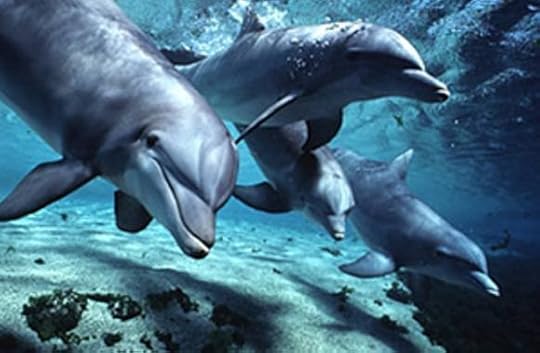 Dolphins will call out the ‘name’ of a loved one they want to be reunited with, a study has found.
Dolphins will call out the ‘name’ of a loved one they want to be reunited with, a study has found.
The highly intelligent and sociable creatures are known to use their own signature whistle to introduce themselves to others.
Now experts have shown that a calf separated from its mother mimics her short, sharp whistle in what is thought to be a way of trying to trigger a reunion. A male will use the same method to try to find its best friend of the same sex.
Researchers at St Andrews University analysed recordings of bottlenose dolphins from Florida which were periodically caught for health checks. During these checks the animals could normally hear, but not see, each other.
Information on captive dolphins at Walt Disney World, also in Florida, was factored in. The data showed that when two close male friends were separated, one would often mimic the whistle of the other.
Source: Daily Mail




